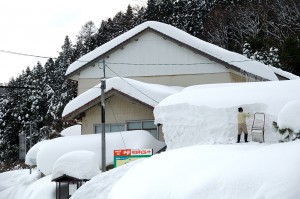
So far, most places in the US have been spared from the heaviest snowfalls. But it’s just a matter of time before a whopper of a storm dumps many inches, or even feet, of snow on roads, sidewalks, and buildings.
Heavy buildups of snow add additional weight to roofs and support beams. Too much can cause a collapse. But removing snow from buildings’ roofs also has its risks.
Significant Hazards
Workers climbing onto icy, snow-covered roofs put their health at risk in more ways than just falling. For one thing, it’s bound to be cold up there. Frost and hypothermia from cold temperatures and high winds can cause injury very quickly.
Roofs that laden with snow already have a higher risk of collapse. Adding the weight of workers only increases it.
Working in extreme conditions lifting heavy snow can easily cause overexertion. After every winter snow, hospital emergency rooms are jammed with older, overweight adults suffering from heart attacks and other maladies related to trying to shovel too much snow too quickly.
Then there’s the risk of shock or electrocution from buried wires, hanging power lines, or damaged extension cords.
Removing Roof Snow Safely
Whenever possible, the best plan is often to do nothing at all. Don’t put workers at risk by requiring them to climb onto snowy, icy roofs in severe weather conditions — especially if it’s not necessary.
Rather than getting on the roof, use ladders to apply de-icing materials or use rakes or draglines that can be operated from ground level.
Get an engineering assessment about how much weight your roof can actually hold. Most communities have building codes that require structures to withstand the weight of even the heaviest snow.
When There’s No Other Choice
If your roof is at risk of imminent collapse, the best approach is to hire professionals to clear the snow for you. Provide workers with the proper safety equipment to minimize the risk of injury or death, such as fall protection equipment, ladders, or aerial lifts.
Workers climbing onto roofs should be alert of unexpected sounds or movement, which could indicate an imminent collapse or snowslide.
Use rakes or brooms to remove snow uniformly across the roof. Unbalanced loading can increase the risk of roof collapse or snowslides. Don’t push snow into piles on the roof. Instead, push or throw it off the roof as you go.
Provide intense supervision whenever putting workers at risk by requiring them to climb onto a snowy roof. Have a plan for rescuing workers in case something goes wrong.
Most importantly, if there’s no real risk of damage to your building, don’t put workers at risk. Eventually, the snow will melt on its own.
